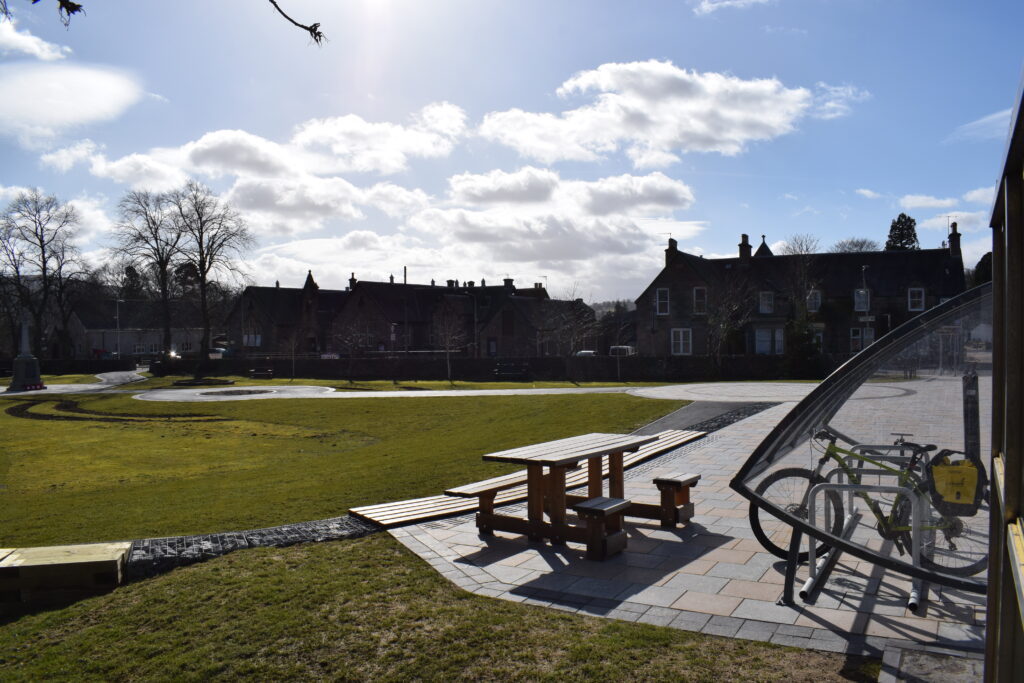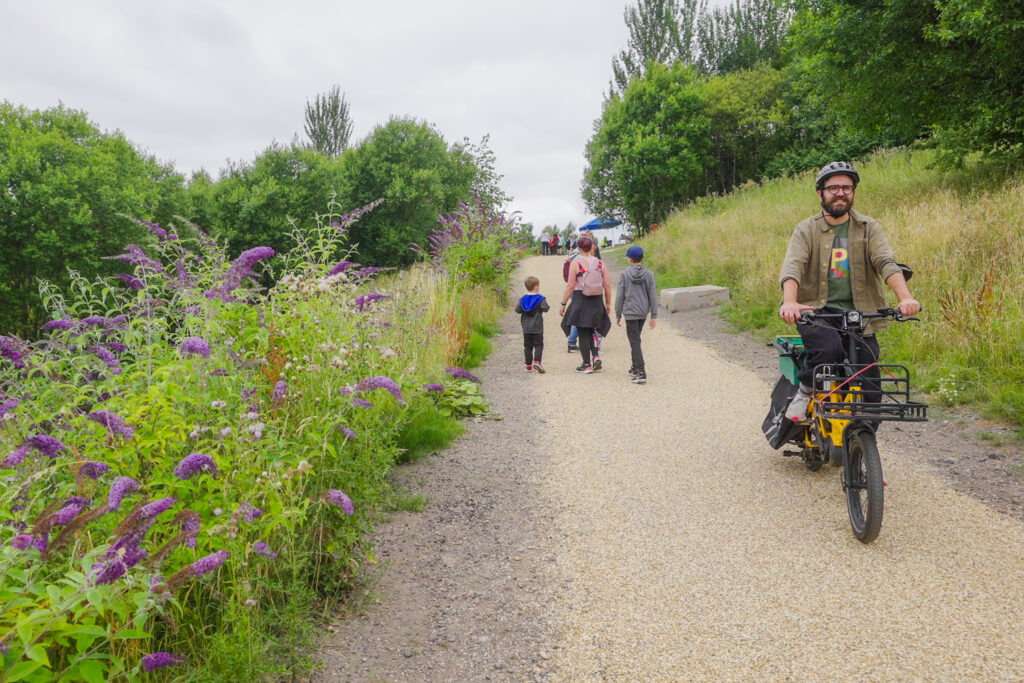I think that I shall never see,
Joyce Kilmer 1888-1918
A poem lovely as a tree.
Places for Everyone encourages the creation of green space as part of walking, wheeling and cycling projects. This article looks at the benefits of including plants and trees in your infrastructure project and how Places for Everyone can supporting greening.
Why Plants?
Wellbeing
For most people, the ability of plants to lift the senses is something to which they can personally testify; but there is also a growing body of scientific evidence that demonstrates how much planting can benefit the health of both individuals and communities. Attractive places bring people together and increase social contact between neighbours, and are also safer spaces.
The Journal of Environmental Horticulture has summarised recent academic literature on the social benefits of planting.
Biodiversity
Varied planting can make an important contribution to bio-diversity, generating an ecosystem that includes insects, birds and small mammals. Often this means employing a different sort of maintenance regime from approaches many authorities have got used to, but this may not involve more work. Continuous green corridors can prove especially attractive to wildlife, as well as to human users.
Sustainable drainage
The increasing frequency of flash storms and our large acreage of hard landscaping make flooding a growing risk. Planting can be used to trap water and allow it to infiltrate slowly into the ground, so that very little has to be carried away by the drainage system. Inclusion of a gravel layer below the topsoil can increase the amount of water such a system can cope with, and also filter out obstructions that might block pipes. Sustainable Urban Drainage Systems (SUDS) can take the form of planting areas into which run-off can flow (rather than raised beds), or shallow depressions, or swales, which can also be made more attractive and effective with suitable planting.
Urban Design London have published technical guidance on the creation of rain gardens.
Summer Cooling
While urban heat islands, and excess heat generally, are less of a problem in Scotland than many places, most people appreciate a shady tree on a hot day, and the need for some further cooling is likely to increase. Plants also cool the air when they use heat energy to evaporate water from their leaves; and they lose heat much more quickly than solid earth or masonry, so that an area shaded by plants will cool much more quickly at night.
The Forestry Commission issued a report in 2019 on the role of trees and greenspaces in reducing urban air temperatures.
Examples in our projects
Gynack Gardens

The Gynack Gardens project in Kingussie is testament to how accessible green placemaking initiatives can be a valuable tool for improving wellbeing and fostering social connections within communities.
Serving as both a direct link to the local school and train station, as well as an attractive events space for arts productions and farmers markets, this polished green space is a popular destination for town residents residents, as well as visitors travelling along the National Cycle Network Route 7 and Speyside Way.
Construction on the gardens was completed in Spring 2021. Sustrans worked closely with project lead Kingussie Community Development Trust, consultants TGP and McGowan Environmental Engineering to deliver a vision of meandering paths and wooden benches enclosing a main stone plaza.
The community completed the works with sheltered bicycle parking and a DIY repair station.
Canal and Claypits

Just a mile north of Glasgow city centre, the Hamiltonhill Claypits is a restored area of natural greenspace which forms part of a key walking, wheeling and cycling route for those in the north of the city.
The site is also Glasgow’s only designated inner-city Local Nature Reserve, managed by volunteers of the Claypits Management Group on behalf of Scottish Canals.
The vision behind the project, delivered by Sustrans in partnership with Scottish Canals and Glasgow City Council, was to connect the residents of Panmure Gate and Woodside via a new active travel bridge.
Currently, the communities are split from one another by the Forth and Clyde Canal.
It was also important that the project cultivate and preserve existing habitats in the area, which would jointly serve as a place for locals to relax, exercise and re-connect with nature.
Working with local communities, a scenic network of pathways and newly installed boardwalks were introduced, allowing wildlif to be more accessible. In addition, community planting of trees and shrubs was introduced to more effectively manage the site ecology.
To the immediate south and west, a state of the art electronic footbridge was built by McKenzie Construction. The Garscube Bridge, which serves as a gateway to the Claypits, spans the Forth and Clyde Canal, and allows the safe intermittent passage of boats, cyclists, and pedestrians.